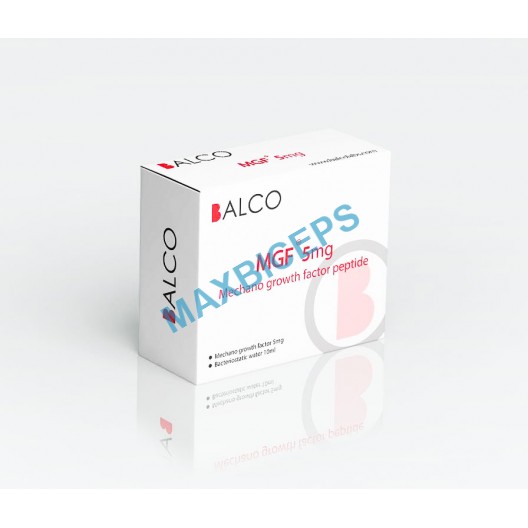MGF is associated with promoting healing in the muscles of animal subjects after they have been damaged, or after a mechanical overload. In a natural setting, the chemical can stimulate the stem and satellite cells in addition to the necessary anabolic processes to promote the growth of new tissue or muscle fibers by tissues that were not damaged. It is believed that MGF and IGF-1 are central to the regrowth of muscle and the primary anabolic mechanism used to create new tissue. MGF is derived from IGF-1 but its sequence differs from the systemic
IGF-1 produced by the liver. MGF is expressed by mechanically overloaded muscle and is involved in tissue repair and adaptation. It is expressed as a pulse following muscle damage and is apparently involved in the activation of muscle satellite (stem) cells. The C-terminal peptide MGF. was found to function independently from the rest of the molecule. At any rate. IGF-1 exists in multiple isoforms (tissue-specific proteins of functional and structural similarity). One isoform, which differs from the systemic or liver type, happens to be particularly sensitive to mechanical signals such as the gamut of exercise overload. MGF is a local splice variant of IGF-1 produced by dam aged or loaded skeletal muscle.
The physiological function of MGF was studied using an in vitro cell model. Unlike mature IGF-1. the distinct Edomain of MGF inhibits terminal differentiation whilst increasing myoblast proliferation. Blocking the IGF-1 receptor with a specific antibody indicated that the function of MGF Edomain is mediated via a different receptor. The most relevant rodent data has been shown that MGF is a very potent inducer of muscle growth when it’s introduced into the muscle via an intramuscular injection. In fact, in one study MGF caused a 20% increase in the weight of the injected muscle within 2 weeks. The local application is appropriate for treatment to certain injuries and prevention of such in the treated muscle. Further investigation elucidated that this was actually due to an increase in the size of the muscle fibers.
DOSAGE:
It is recommended the following:
Administration should not be given within 2 hours after training in order not to reduce natural IGF-1 production.
Administration should not be given within 2 hours before sleeping in order not to reduce natural growth hormone production.
After administering, adequate protein needs to be ingested for MGF to be effective in building new muscle.
Theoretically the more locations used to administer the MGF into the muscle, the more places for muscle growth and prevention or treatment of injuries. So if you intent to administrate in two different muscles, at three different areas of the muscle, two times per day for one week, you must make a protocol like the following:
If you want to administer 1400mcg of MGF into the chest and biceps muscles twice a day and 3 different areas of the muscle then you would need to divide the dose as follows: 1400mcg / 2 times per day = 700mcg per administration
700mcg per administration / 4 muscles (2 chest and 2 bicep muscles) = 180mcg per muscle approximately 180mcg per muscle / 3 different locations on each muscle = 60 meg per injection (3 units on Insulin Syringe).

